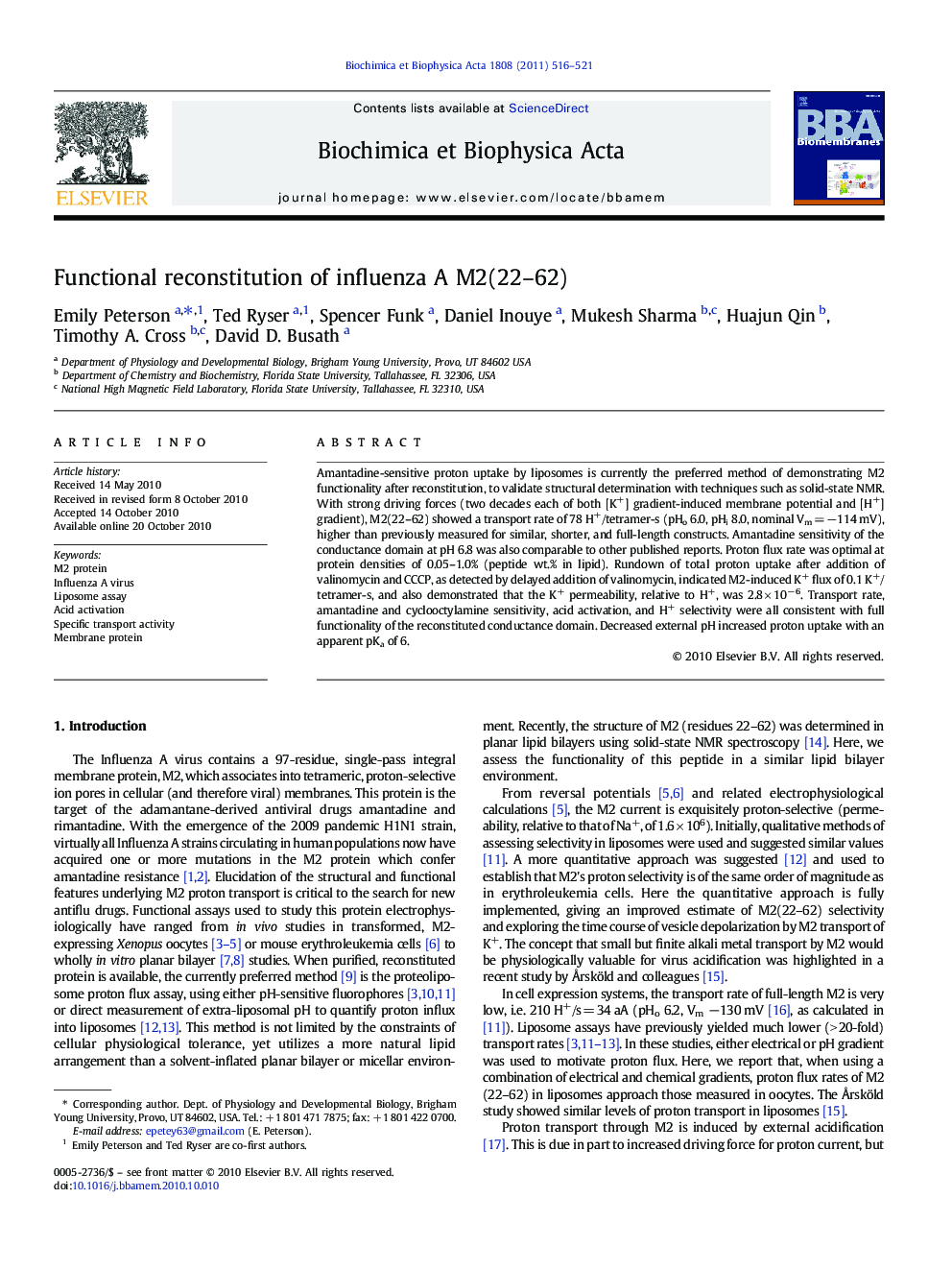| Article ID | Journal | Published Year | Pages | File Type |
|---|---|---|---|---|
| 1944628 | Biochimica et Biophysica Acta (BBA) - Biomembranes | 2011 | 6 Pages |
Amantadine-sensitive proton uptake by liposomes is currently the preferred method of demonstrating M2 functionality after reconstitution, to validate structural determination with techniques such as solid-state NMR. With strong driving forces (two decades each of both [K+] gradient-induced membrane potential and [H+] gradient), M2(22–62) showed a transport rate of 78 H+/tetramer-s (pHo 6.0, pHi 8.0, nominal Vm = −114 mV), higher than previously measured for similar, shorter, and full-length constructs. Amantadine sensitivity of the conductance domain at pH 6.8 was also comparable to other published reports. Proton flux rate was optimal at protein densities of 0.05–1.0% (peptide wt.% in lipid). Rundown of total proton uptake after addition of valinomycin and CCCP, as detected by delayed addition of valinomycin, indicated M2-induced K+ flux of 0.1 K+/tetramer-s, and also demonstrated that the K+ permeability, relative to H+, was 2.8 × 10− 6. Transport rate, amantadine and cyclooctylamine sensitivity, acid activation, and H+ selectivity were all consistent with full functionality of the reconstituted conductance domain. Decreased external pH increased proton uptake with an apparent pKa of 6.
